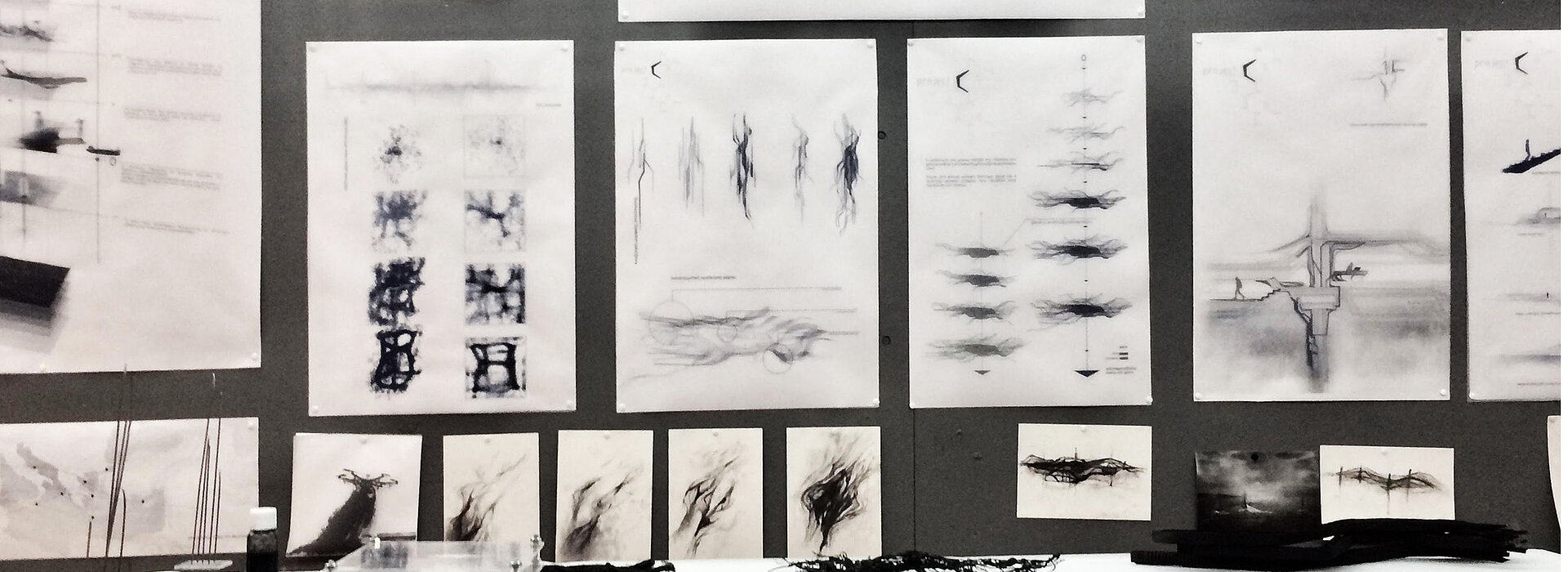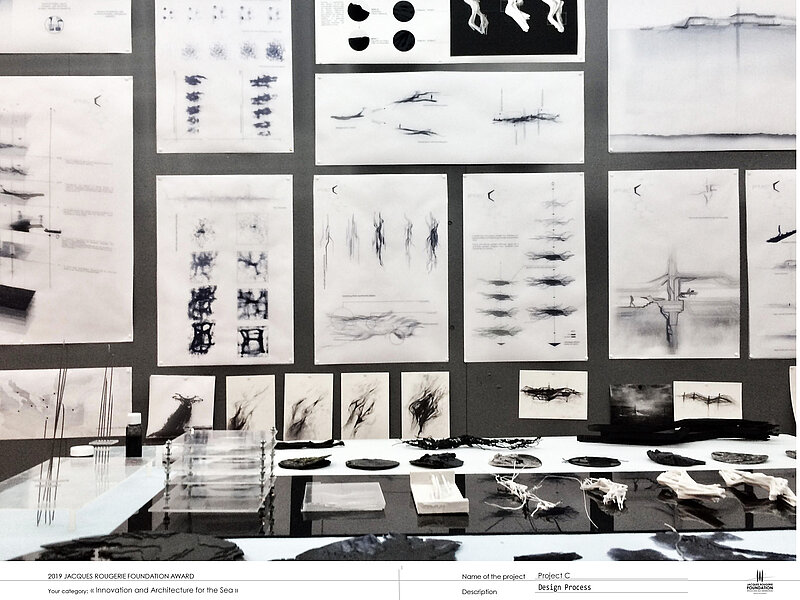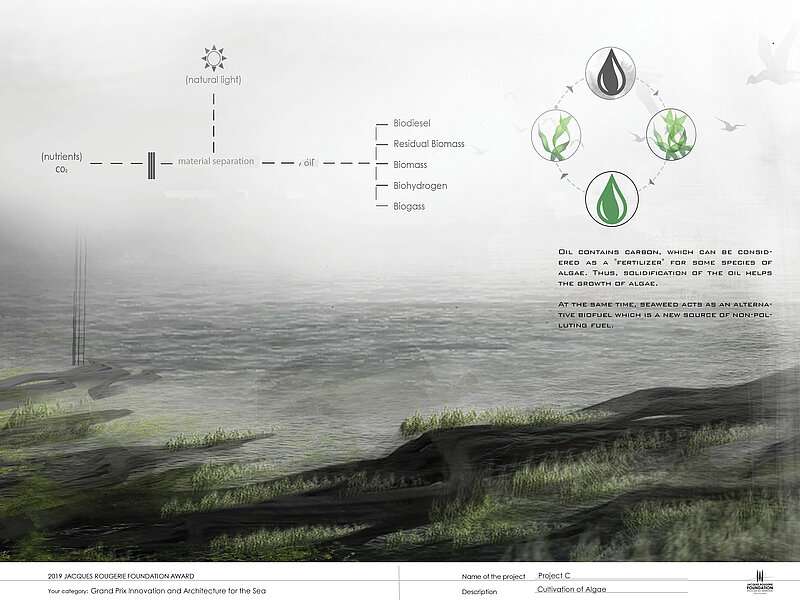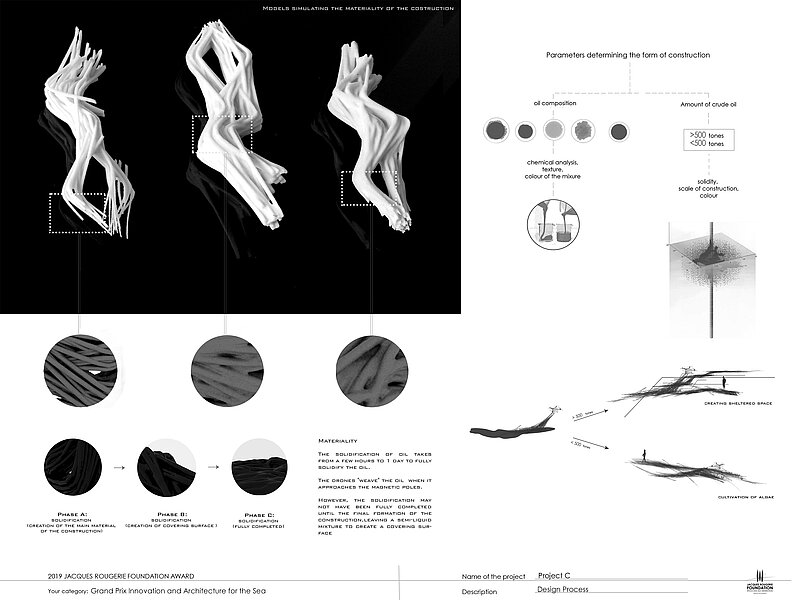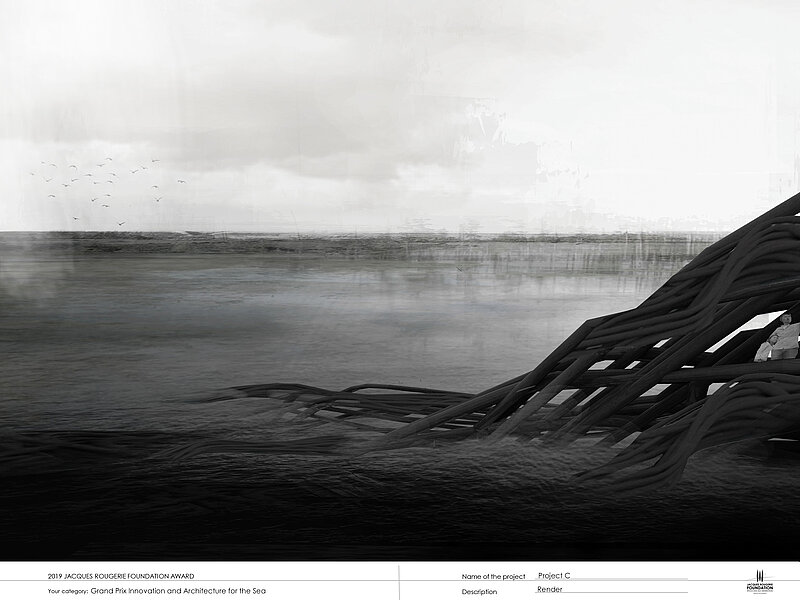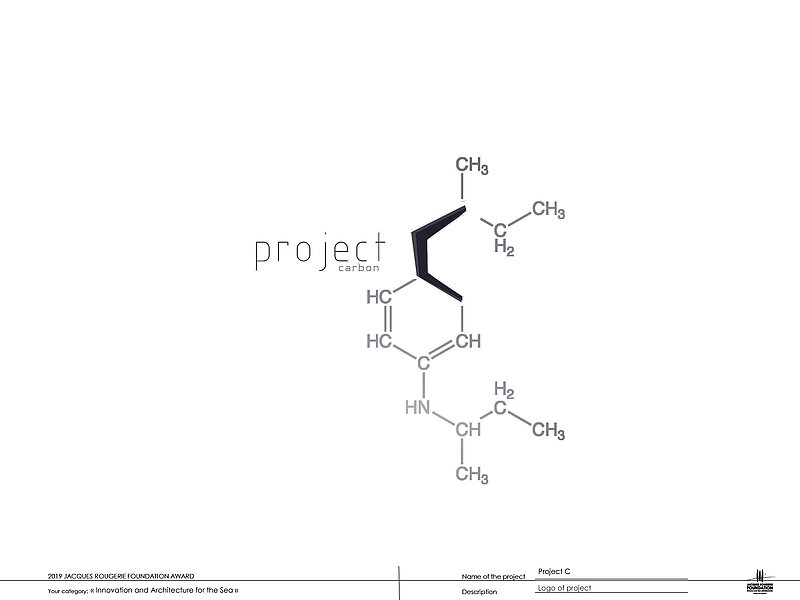Project C
- Year2019
On account of the recent oil spill accident in the Saronic Gulf, where many coasts of Attica have been polluted, there has been a reflection on how architecture with the contribution of other fields of science could propose an innovative approach to such an environmental problem of major importance regarding possible future accidents Scenario _Traction poles are located at critical points in the event of a percentage of oil being spotted in areas within the range of the pylons, the process of oil accumulation is triggered. Procedure_ Drones identify and map the oil spill and then disperse oil-bound oil-bearing material. The pylons function as magnetic poles and collect the new blend material around them (transport through drones), Pylons with the help of drones secrete material (bio-solidifier) which solidifies the mixture and creates solid forms around them using a weaving process after data evaluation. This process creates progressively conditions that can form a “viable” space on the water surface. The activation of the structure only occurs after oil detection. The selt-orqanization of the solid material around the poles is formed through the magnetic system, the coagulation process and the formation of crude oil (quality and quantity of oil). Thus, the construction evolves around some possible scenarios, which lead to a series of spatial events. The intention of exploiting the developing floating system is its future habitation. The use of floating mechanisms ensures water purification by reversing a catastrophe at the beginning for a new spatial expression that will develop dynamically as time goes by. Studying the cycle of matter ways of alternative use and reuse of petroleum can be explored. These conditions help the development of microalgae that could alternatively be used as bio-gas and produce new bio-products.
